Apparently a visit to Hanoi is not complete without a visit to Ho Chi Minh’s Mausoleum and the adjacent historical places and Museum. So, that was the destination for the morning. And it was quite an interesting experience.
The large complex is well guarded, and there’s an elaborate system for getting in. Once through security any backpack sized bag needed to be checked, and must be picked up by 11AM (which as an hour away). A second checkpoint had us place our cameras (but not our phones) in a red bag that was held for us and returned after the mausoleum tour. People are corralled in a waiting queue and groups of maybe 50 let out at a time. We had to walk double file the equivalent of about 2 blocks around the building and then paused again to wait for a group of the right size. We then walked up stairs carpeted in red, and guarded by men in white military uniforms holding bayonets. They were like the palace guards — vigilant but no eye contact or any smiles. The stairs turned on landings twice and then we entered a room with the glass casket holding Ho Chi Minh. Four uniformed guards as just described stood at each corner in a sort of well, as the casket was elevated so he was at eye level for the visitors walking through. We entered on the right, passed by his feet and exited on the left and descended red-carpeted stairs to the outside of the building. There we were given our cameras back, so we could take photos of the exterior of the massive granite building — which seemed to house nothing but Uncle Ho. This whole experience was one of the first reminders that we were in a Communist country; when I tried to pass some people on the line outside I was shoo’d back into the double file.
Also in the complex is the area where Ho Chi Minh lived and worked from December 1954 to his death in September 1969 at the age of 79. There was the presidential Palace, the fishpond that he walked around, an orchard, the cars that ferried his and the historic house on stilts which “symbolizes his living way of simplicity, modest, gentleness and dedication for the nation and the people.” There were many tourists on this walking tour, taking selfies. Again, we didn’t see the appeal.
From there to the Ho Chi Minh Museum which was built “to satisfy the aspirations of the Vietnamese people to show their deep gratitude to President Ho Chi Minh, to commenoborate his great merits, to express their determination to study and follow his Thought, morality and life-stye.” There were a few relics, but mostly newspaper articles and papers from his many years of efforts to communicate the wish of the Vietnamese people to live unified and peacefully with other nations — and against the many who oppressed and occupied the country for so many years. Some of the pieces in the Museum were fabricated or re-created, including a life-size Uncle Ho at his desk. I guess in some ways it was like any presidential museum, but one couldn’t help but feel the reverence in all of it. Of course the limited section on the American War focussed on his efforts to first and foremost strive for peace, and then secondly to inspire the Vietnamese people to fight.
It was time for something a little less political, so off to Van Mieu-Quoc Tu Giam, The Temple of Literature. Situated in a park-like setting the series of pagoda-like buildings and courtyards was dedicated to sages and Confucian scholars and used for training and educating for nearly 1000 years. It was here that the first National University of Vietnam was constructed in 1076 under King Ly Nhan Tong, and then expanded until the Le dynasty (1428-1788) to include classrooms and dormitories. This place is one of the most important historical and cultural sites of Vietnam. The Doctors’ Stone Stelae are the valuable stone historical books about Vietnamese Confucian education, and were recognized as a Documentary Heritage by Unesco in 2011.
And I thought that was it for historical places for the day, but we went to dinner at the Metropole Hotel, which has been a part of Vietnam history since the mid 1800’s. Many famous people stayed there in it’s hey day, and during the war and afterwards it served as an embassy for several countries. Recently an underground bunker/tunnel has been found beneath the Bamboo Bar, which is now open for exploration. Lots of newspaper accounts and photos adorn the walls of one of the main hallways — more fascinating stuff.
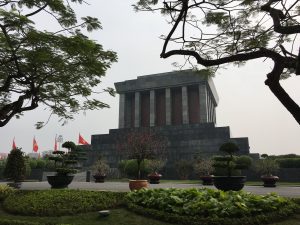
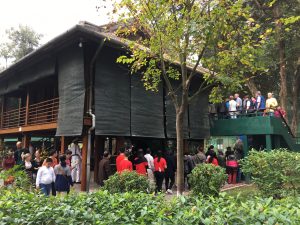
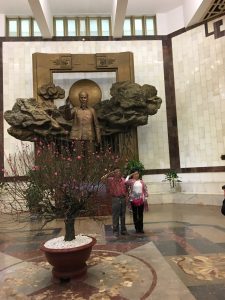
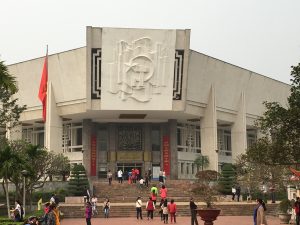
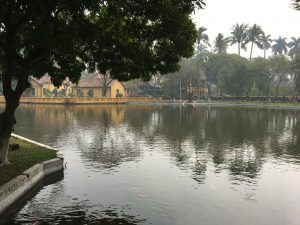
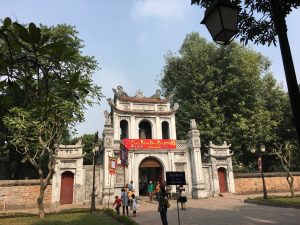

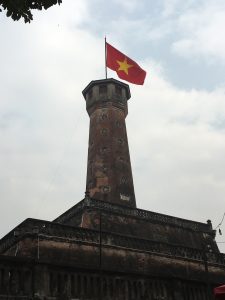
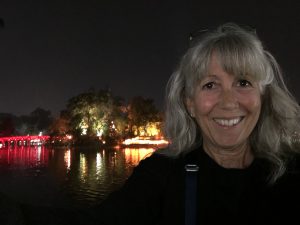
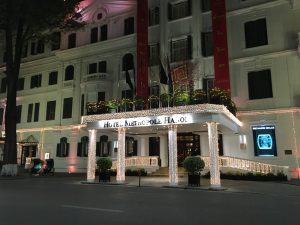
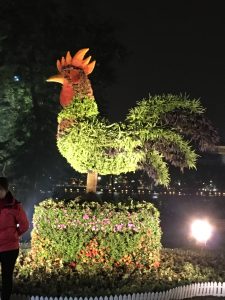

Ok seriously – do you take notes? Or do you just let the memories flow (along with scotch, rocks.)?
I review the pictures to remember what things were and then look at the guide book or the site maps for the historical details. We read as we go along, but it’s hard to remember; sometimes I take a photo of the description of something!